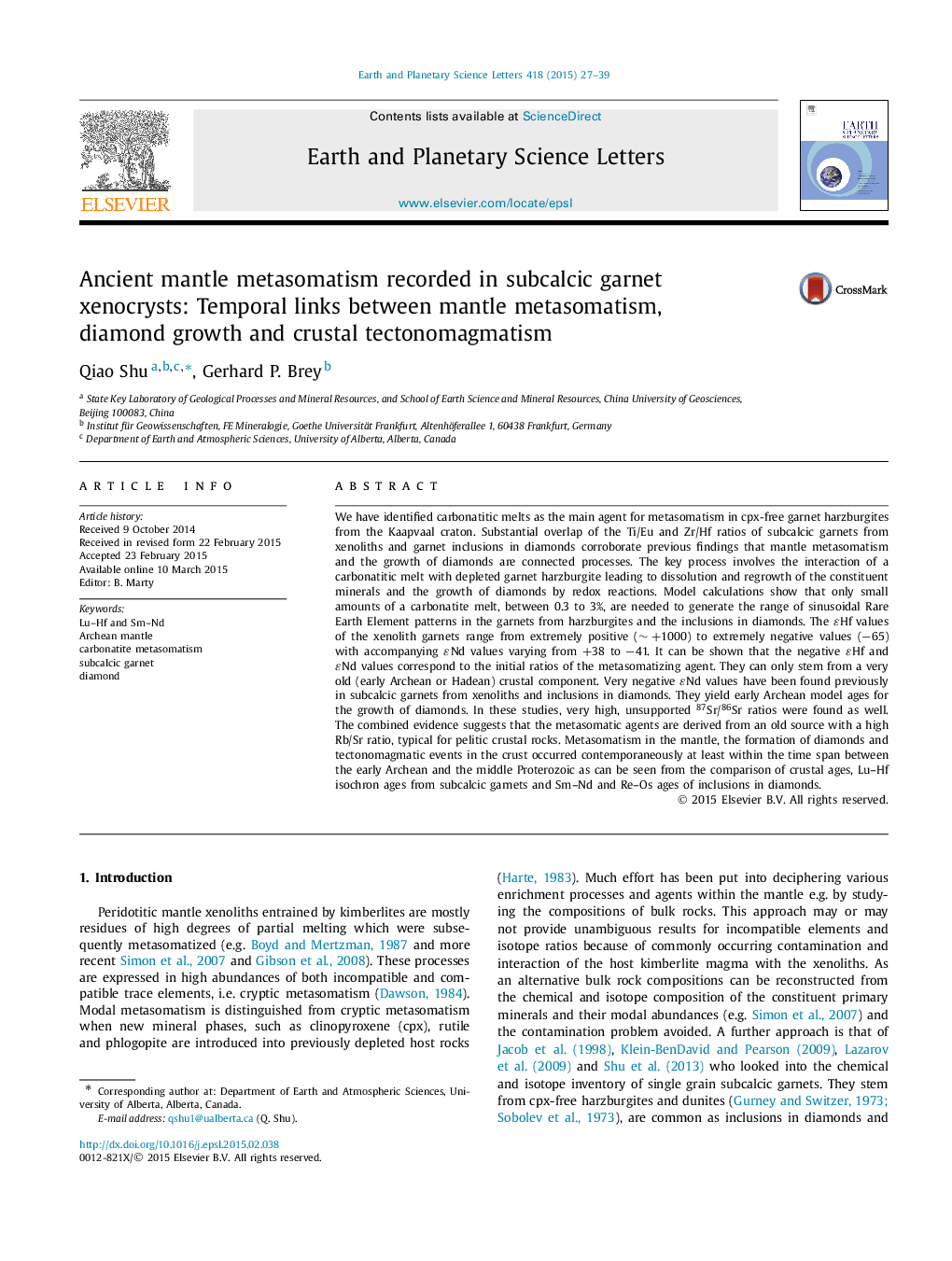| Article ID | Journal | Published Year | Pages | File Type |
|---|---|---|---|---|
| 6428355 | Earth and Planetary Science Letters | 2015 | 13 Pages |
â¢Carbonatite metasomatism in garnet harzburgites identified by Ti/Eu and Zr/Hf.â¢Carbonatite metasomatism in the subcratonic mantle starts in the early Archean.â¢Metasomatic episodes coincide with diamond growth and crustal tectonomagmatism.â¢Metasomatism has an early Archean crustal component in its source.
We have identified carbonatitic melts as the main agent for metasomatism in cpx-free garnet harzburgites from the Kaapvaal craton. Substantial overlap of the Ti/Eu and Zr/Hf ratios of subcalcic garnets from xenoliths and garnet inclusions in diamonds corroborate previous findings that mantle metasomatism and the growth of diamonds are connected processes. The key process involves the interaction of a carbonatitic melt with depleted garnet harzburgite leading to dissolution and regrowth of the constituent minerals and the growth of diamonds by redox reactions. Model calculations show that only small amounts of a carbonatite melt, between 0.3 to 3%, are needed to generate the range of sinusoidal Rare Earth Element patterns in the garnets from harzburgites and the inclusions in diamonds. The εHf values of the xenolith garnets range from extremely positive (â¼+1000) to extremely negative values (â65) with accompanying εNd values varying from +38 to â41. It can be shown that the negative εHf and εNd values correspond to the initial ratios of the metasomatizing agent. They can only stem from a very old (early Archean or Hadean) crustal component. Very negative εNd values have been found previously in subcalcic garnets from xenoliths and inclusions in diamonds. They yield early Archean model ages for the growth of diamonds. In these studies, very high, unsupported 87Sr/86Sr ratios were found as well. The combined evidence suggests that the metasomatic agents are derived from an old source with a high Rb/Sr ratio, typical for pelitic crustal rocks. Metasomatism in the mantle, the formation of diamonds and tectonomagmatic events in the crust occurred contemporaneously at least within the time span between the early Archean and the middle Proterozoic as can be seen from the comparison of crustal ages, Lu-Hf isochron ages from subcalcic garnets and Sm-Nd and Re-Os ages of inclusions in diamonds.
